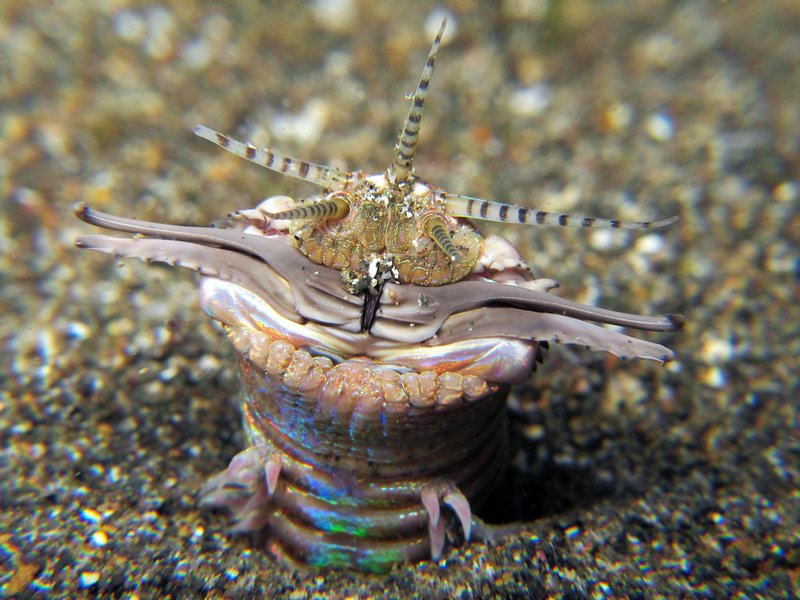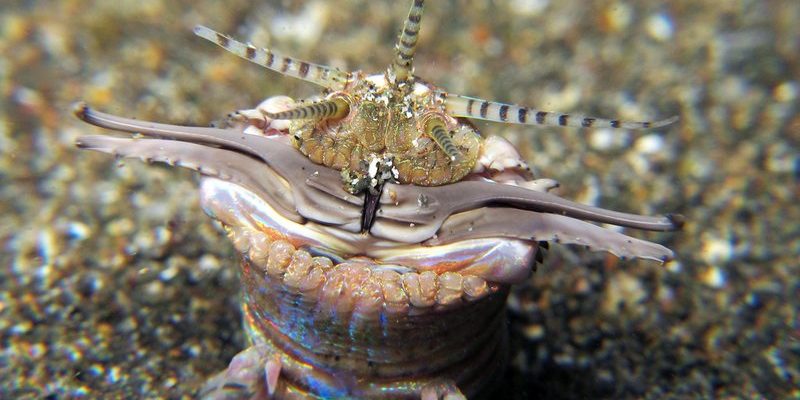
Imagine a Bobbit worm curled up in a cozy burrow under the ocean, camouflaged and ready to ambush unsuspecting prey. In the wild, these impressive worms can thrive for quite a while, but their lifespan may vary greatly depending on their environment, food availability, and predators. In captivity, conditions can change their longevity, too. So, let’s dig deeper into the fascinating world of Bobbit worms and uncover the secrets of their lifespan.
What is a Bobbit Worm?
To understand the lifespan of a Bobbit worm, it helps to know what it is. Bobbit worms, or *Eunice aphroditois*, are marine polychaete worms found in tropical and subtropical waters globally. They can reach lengths of up to 10 feet! Think of them as the anacondas of the ocean, but instead of slithering through the jungle, they live deep in sandy or muddy substrates.
These worms have a unique appearance. Their segmented bodies are brightly colored, often featuring shades of green, blue, and red. They have long, retractable jaws that open like a pair of scissors to snatch up their prey—often small fish and crustaceans. The Bobbit worm’s predatory skills and camouflaging abilities make it a formidable hunter in its underwater realm.
Lifespan of Bobbit Worms in the Wild
In their natural habitat, Bobbit worms can live between 5 to 30 years, depending on several factors such as water quality, food availability, and predation. Here’s the thing: they thrive in healthy ecosystems where food is abundant. When conditions are right, these worms can grow continuously and live longer lives.
But nature isn’t always kind. Predators, like fish and other larger marine animals, can reduce their lifespan significantly. Also, if the environment becomes polluted or disrupted, their life can become shorter due to the lack of resources. So, they’re quite resilient, but they can also be vulnerable.
Factors Affecting Lifespan in the Wild
Several key factors contribute to how long Bobbit worms live in the wild:
- Food Availability: A steady supply of food can help them grow quickly and reach their full lifespan.
- Predation: Larger fish or even other marine predators can significantly shorten their lives.
- Environmental Conditions: Pollution and habitat destruction can lead to a decrease in lifespan due to stress or lack of nutrients.
Understanding these influences can help us grasp how lifespans can vary in different ecosystems.
Biodiversity and Its Role in Lifespan
Biodiversity plays a crucial role in the lifespan of Bobbit worms. In healthy, diverse marine environments, they are more likely to flourish. Coral reefs, for example, offer a wealth of food and shelter. The more diverse an ecosystem, the better chances for these worms to thrive.
Conversely, in less biodiverse areas, competition for resources can increase. This can lead to a tougher life for Bobbit worms, potentially shortening their lifespan. Healthy ecosystems are essential not just for Bobbit worms but for countless species that share the same habitat.
Bobbit Worms in Captivity
When it comes to captivity, life changes quite a bit for Bobbit worms. In aquariums, they can live anywhere from 5 to 10 years on average. This shorter lifespan may seem surprising, but it’s largely due to the difference in environment and diet.
In captivity, Bobbit worms are often fed a controlled diet, which may not always mimic their natural feeding habits. Additionally, they may not have the same level of stimulation or space they would enjoy in the wild. So, while they can live a decent life, it’s not always as long as it could be.
Challenges of Captivity
Several factors impact Bobbit worms’ lifespans when kept in aquariums:
- Diet: An improper diet can lead to health issues and shorter lifespans.
- Stress: Captive conditions can lead to stress, affecting their overall health.
- Space: Limited space may not provide them with adequate room to burrow and exhibit natural behaviors.
Each of these can make a significant difference in how long these fascinating creatures can live when removed from their wild habitats.
Comparing Lifespans: Wild vs. Captivity
Comparing the lifespans of Bobbit worms in the wild and captivity can be eye-opening. While they can thrive for 30 years in their natural habitats, captivity may only allow them to live for about 5 to 10 years.
This difference doesn’t just reflect well on the worms’ adaptability; it emphasizes the importance of preserving their natural environments. If we want Bobbit worms to live long and healthy lives, protecting their ecosystems is essential. In the end, their lifespan is closely tied to the health of our oceans.
Understanding the lifespan of Bobbit worms, both in the wild and in captivity, sheds light on the complexities of life under the sea. From their unique hunting abilities to the challenges they face, these worms are remarkable creatures worth learning about.
So, whether you’re captivated by their vibrant colors or curious about their lifestyles, knowing their lifespans gives you a deeper appreciation for these ocean dwellers. Remember, every creature plays a role in the grand tapestry of life, and the Bobbit worm is no exception. Let’s work together to ensure they can thrive and continue to inspire awe in the generations to come.

